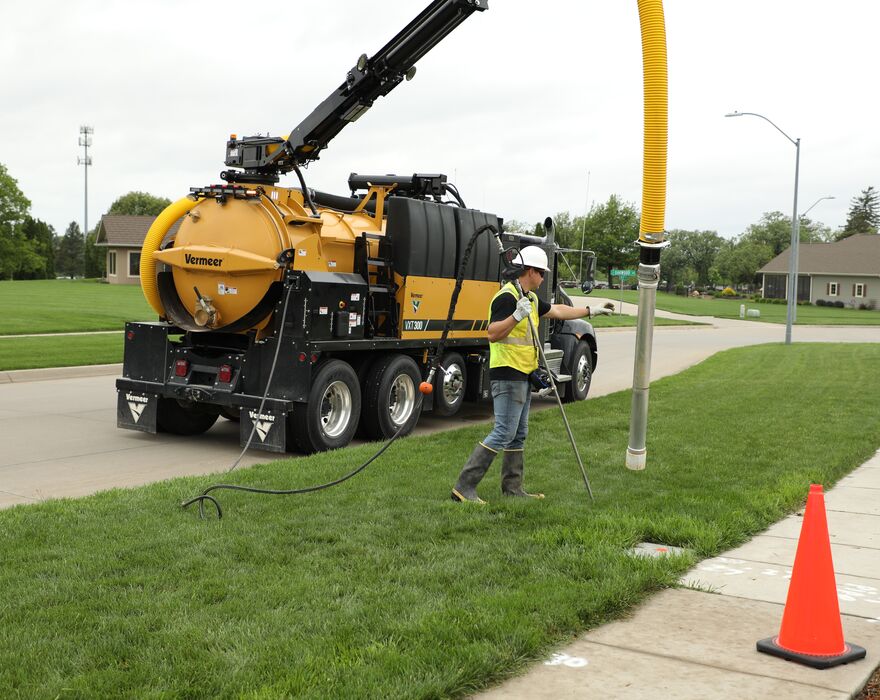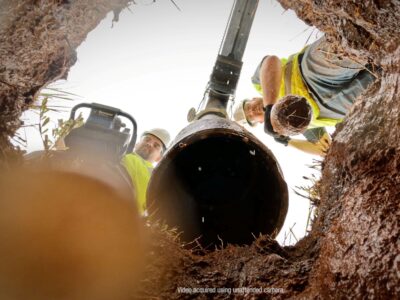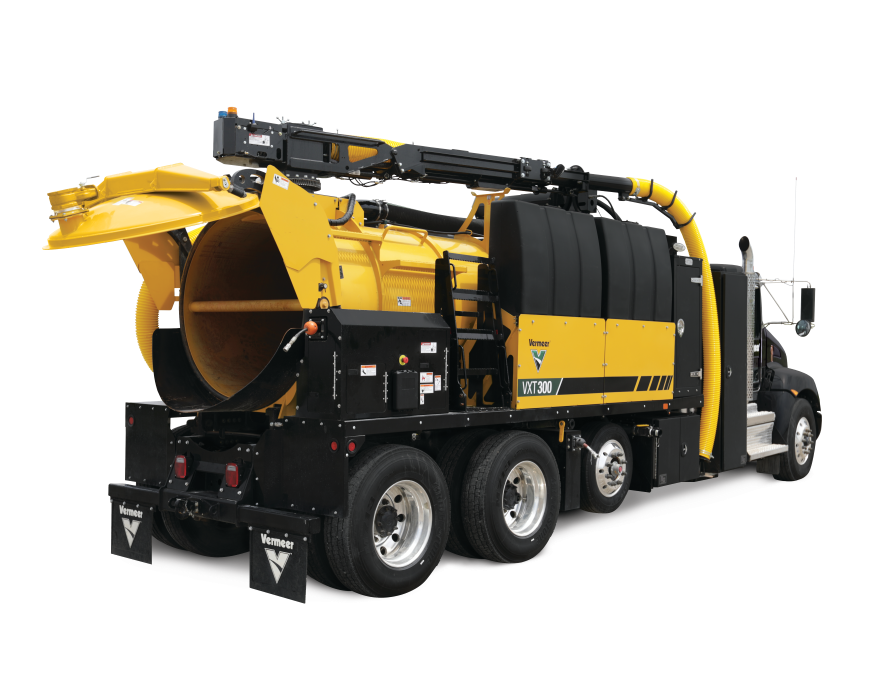Hydro excavation offers contractors a precise way to work around underground utilities, but one question keeps coming up: do you still need to call 811 before using hydro excavation equipment?
The short answer is yes – and here’s why that matters for your next project.
Why 811 still applies to hydro excavation
Despite its precision compared to traditional mechanical digging, hydro excavation still requires proper utility locating procedures. Federal law doesn’t distinguish between excavation methods – any ground disturbance that could potentially contact underground utilities requires advance notification to your local 811 center.
According to Call811.com, “many utilities are buried just a few inches (centimeters) below ground” and “erosion and root system growth can alter the depth or location of buried lines.” Even sophisticated hydro excavation equipment can damage underground infrastructure when operators don’t know what’s below.
While state regulations recognize hydro excavation as an acceptable method for working near utilities – Florida law specifically mentions “vacuum excavation methods” as required for increased caution within tolerance zones, and New York regulations state that “vacuum excavation techniques are acceptable means of exposing underground facilities” – these designations don’t eliminate 811 notification requirements. The equipment may offer more precision, but you still need to know where utilities are located before you start digging.
What utility strikes actually cost
The 2023 DIRT Report from the Common Ground Alliance shows patterns that affect all excavation work, including hydro excavation projects. For the third consecutive year, the top six damage root causes accounted for nearly 76% of all incidents. The leading cause remains “failure to notify 811.”
Utility strikes create costs beyond immediate repairs:
- Project delays that stretch timelines by days or weeks
- Legal liability for damages to third-party infrastructure
- Safety risks to workers and the public
- Service disruptions affecting entire communities

When 811 locating becomes especially important
Hydro excavation’s precision makes it a practical choice for several scenarios where utility strikes could cause serious problems:
Emergency repairs: When time is short, it’s tempting to skip locating procedures. However, emergency situations often involve compromised infrastructure where additional utility strikes compound problems. While California law provides an emergency exemption from 811 requirements for true emergencies that create “clear and imminent danger,” this applies to all excavation methods, not specifically to hydro excavation equipment.
Complex utility environments: Urban areas with dense utility corridors or sites with multiple facility types increase the likelihood of encountering unmarked or poorly documented utilities. In these situations, hydro excavation’s ability to carefully expose utilities becomes valuable, but only after proper 811 notification identifies what should be there.
“We see contractors using vacuum excavators more frequently for potholing work because you can expose utilities without the guesswork,” explained Steele. “The precision allows you to work confidently around existing infrastructure once you know where everything is located.”
Installation and maintenance work: When installing new utilities or performing maintenance near existing infrastructure, hydro excavation provides the precision needed to work safely in tight spaces — but advance notification remains essential to map all existing facilities in the work area.
Smart practices for hydro excavation projects
Understanding when 811 locating becomes critical is just the first step. When using hydro excavation equipment, following these practices keeps projects on track:
Call 811 at least two business days before starting work: This advance notice gives utility owners time to mark their facilities. The DIRT Report shows that across 12 states examined, locates were delivered on time for only 30% – 70% of tickets, so early notification helps.
Use hydro excavation for verification: Hydro excavation’s precision makes it ideal for exposing and verifying utility locations marked by 811. This verification process helps identify any utilities missed during initial locating and confirms the exact position before full-scale excavation begins.
“One of the biggest advantages we hear from contractors is how vacuum excavators let them verify what’s actually underground before committing to larger excavation work,” noted TJ Steele, product manager for Vermeer MV Solutions. “You can expose a small area, confirm what you’re dealing with, and then plan your approach accordingly.”
Keep proper clearances: Even after exposing utilities, maintain appropriate clearances during continued excavation work. Precision equipment doesn’t eliminate the need for careful work practices around exposed facilities.
Keep detailed records: Document locating requests, utility positions and any discrepancies discovered during excavation. This protects your operation and helps improve future locating accuracy.
How technology supports safe excavation
Modern hydro excavation equipment includes operator-friendly features that work alongside proper locating procedures. Advanced control systems allow operators to make precise adjustments to water pressure and suction based on soil conditions and proximity to utilities.
“The technology in today’s vacuum excavators gives operators better control over the digging process,” explained Steele. “Features like variable water pressure and precise suction control let operators adjust their approach when they’re working close to marked utilities, which helps prevent accidental damage.”
Some operations use GPS-enabled utility locating devices that can update facility maps as utilities are exposed and verified. This approach, documented by the Common Ground Alliance, shows how technology can support rather than replace established safety protocols.
Planning for what’s ahead
The excavation industry faces increased activity ahead. Federal infrastructure investments are driving more excavation work, particularly for broadband expansion and water infrastructure improvements. This increase makes proper locating procedures more important.
“We’re seeing more contractors invest in vacuum excavation equipment because the work is becoming more complex,” observed Steele. “When you’re working around existing fiber networks or in areas with multiple utilities, having that precision becomes really valuable for maintaining project schedules.”
Whether you’re using traditional mechanical excavation or hydro excavation, the process stays the same: call 811, wait for utility marking, verify locations through careful excavation and maintain proper clearances throughout your project.
Hydro excavation offers contractors better precision and safety compared to traditional methods. However, this equipment works best when combined with proper planning, utility locating and established safety protocols. The goal is to dig safely while contributing to the industry’s shared responsibility for damage prevention outlined by the Common Ground Alliance.
For contractors considering hydro excavation equipment, contact your local Vermeer dealer to learn how the right equipment and expertise can help maintain the highest safety standards while maximizing operational efficiency.
Vermeer MV Solutions, Inc. reserves the right to make changes in engineering, design and specifications; add improvements, or discontinue manufacturing at any time without notice or obligation. Equipment shown is for illustrative purposes only and may display optional accessories or components specific to their global region. Please contact your local Vermeer dealer for more information on machine specifications. Vermeer, the Vermeer logo, Verifier and Vermeer MV Solutions are trademarks of Vermeer Manufacturing Company in the U.S. and/or other countries. © 2025 Vermeer MV Solutions, Inc. All Rights Reserved.

